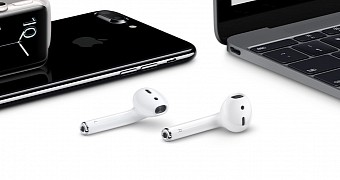Apple's real courage is not about removing stuff from their devices, but rather making it in such a way that, looking back, we will always say, "It was the right thing to do and the only way to help things go forward."
Remember Flash? Back in 2010, Steve Jobs wrote it out of their devices. In 2016, Chrome is taking it out and redirecting all video traffic to HTML5 versions.
What would have happened to 2016 devices if Flash were still around? They would have been thicker to accommodate more battery, just to play the power-hungry Flash videos and animations.
What would have happened if the 30-pin connector were still around? Or how about the CD or the floppy drive?
Sure, we may not see it for the first few years. 5 years may come to pass, and users could still long for a headphone jack, just because this is how they used to listen to their music, videos, and podcasts.
But how will this push us forward?
Running a cable from our devices to our ears is the least expensive and simplest solution to listen to music and podcasts. Headphones are cheap, you can buy them anywhere, and the 3.5 mm audio jack is the most common connector out there. Every phone has one, every can on the market, be it in-ear or regular headphones, has it.
Why would you pay $159 for the Apple AirPods when you can get the wired version for less than one-fifth of that?
Well, nobody is asking you to buy the Apple ones. Bluetooth headsets have been around for years.
Are they good enough? Most of them are. Sure, the occasional audio drops and the too-short battery issues are still here.
Apple's move will help the manufacturers go forward. Innovative solutions like AirPods' charging and pairing case will push others to think out of the box.
With Bluetooth 5.0 just around the corner, the wireless standard will bring a lot more to the user. There are currently over 8.2 billion devices that support it, and estimations show that the number will grow to 50 billion by 2020.
Bluetooth 5.0 will be speedier and more reliable. The pairing will also be streamlined. Think about the way the new AirPods are pairing with the iPhone. It only takes the push of a button on the charging case. And the great thing about them is that they work with devices as old as iPhone 5 - a phone released in September of 2012.
No, Apple is not the one releasing Bluetooth 5.0, but a wider adoption of this standard by device (laptops, phones) manufacturers and by audio gear (headphones or speakers) makers can be encouraged by a handset that doesn't offer a headphone jack but sells in large numbers.
Will others follow?
Samsung and other big phone manufacturers will probably mock Apple's decision to get rid of the headphone jack. Selling a Samsung Galaxy Phone or a Samsung Note device (that doesn't explode) with a headphone jack can really be a point of discussion. Users may choose such a device just for being easier to connect to their car audio system or their existing accessories.
Will Samsung go wireless with their devices? Sure they will. In a few years, when the headphone jack connector gets in their way to a thinner device with a bigger battery, they may as well take it out.
The headphone jack is not only about offering the best audio quality or reliability on the cheap, but it is also about using something you know since you were a child. When users discover the fact that you can actually have the same reliability in a wireless pair of ear buds, the headphone jack is no longer necessary.
Sure enough, Apple offers EarPods connected via the lightning port. This is not something we will see getting a wide, cross-device adoption. But this is just a solution Apple has for the wired-loving headphone users who are not willing to spend $159 for a wireless pair of headphones.
Yes, there is an adapter in the box with the iPhone 7. You can use it to have all your audio gear work fine with the new device. But this is just a way to ease the departure. Wireless is the future for audio, just as well as it is for the Internet connection you are on right now.
Just think of how you used to put a CD in your optical drive, wait for it to crank a few times, look for it spinning and showing up on your Desktop and then slowly copy the files from it or install a new operating system.
Back in 2012, when Apple killed the disk drive, everyone thought they were crazy. It all happened less than 4 years ago, but it feels like it was a decade ago, right?
Do you really miss the optical drive in your laptop? How about Flash video?
Looking back, five or ten years from now, we will smile thinking about the people who were using a cable to connect their device to their ears in order to listen to music.

 14 DAY TRIAL //
14 DAY TRIAL //